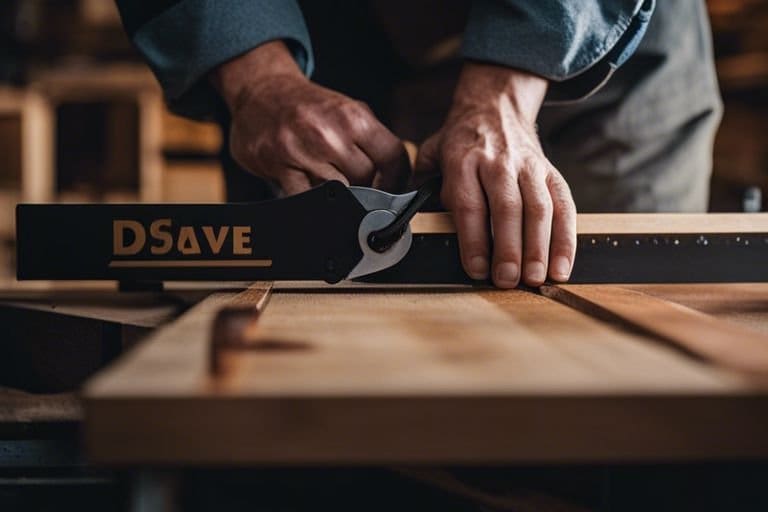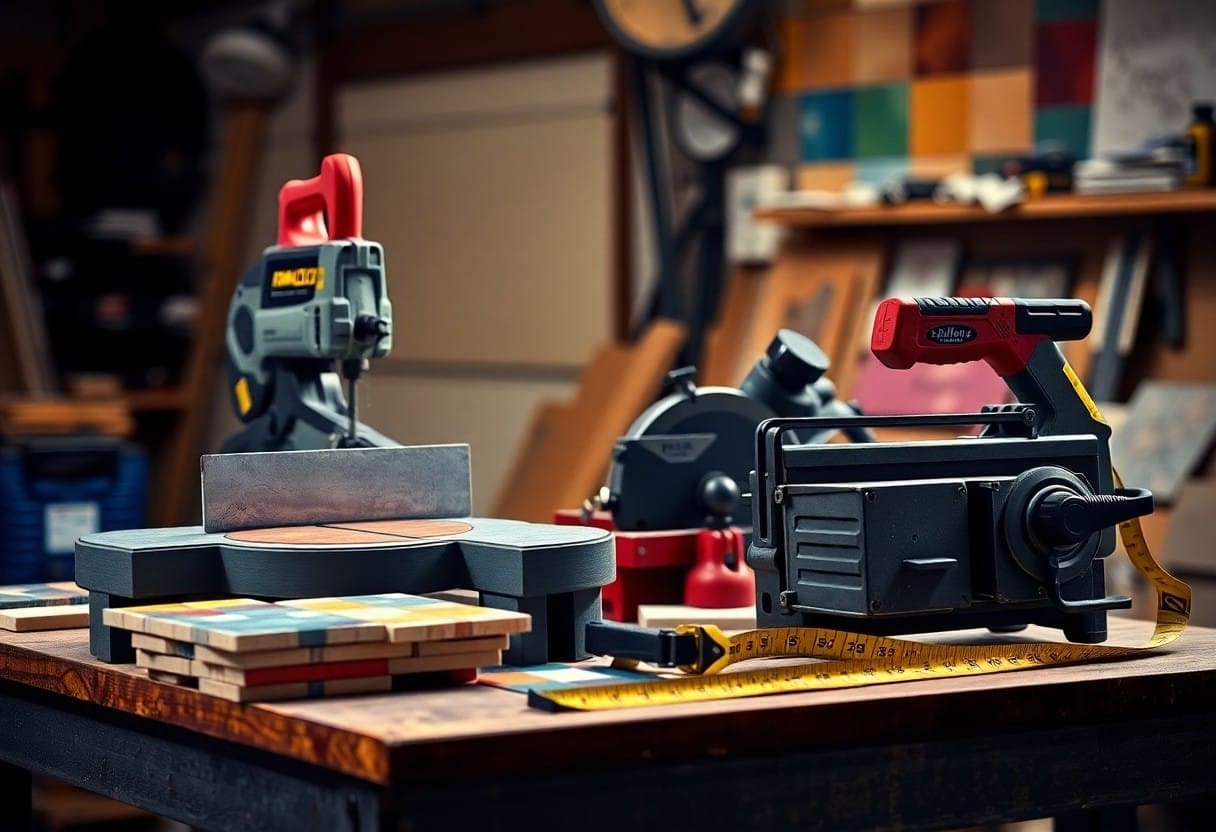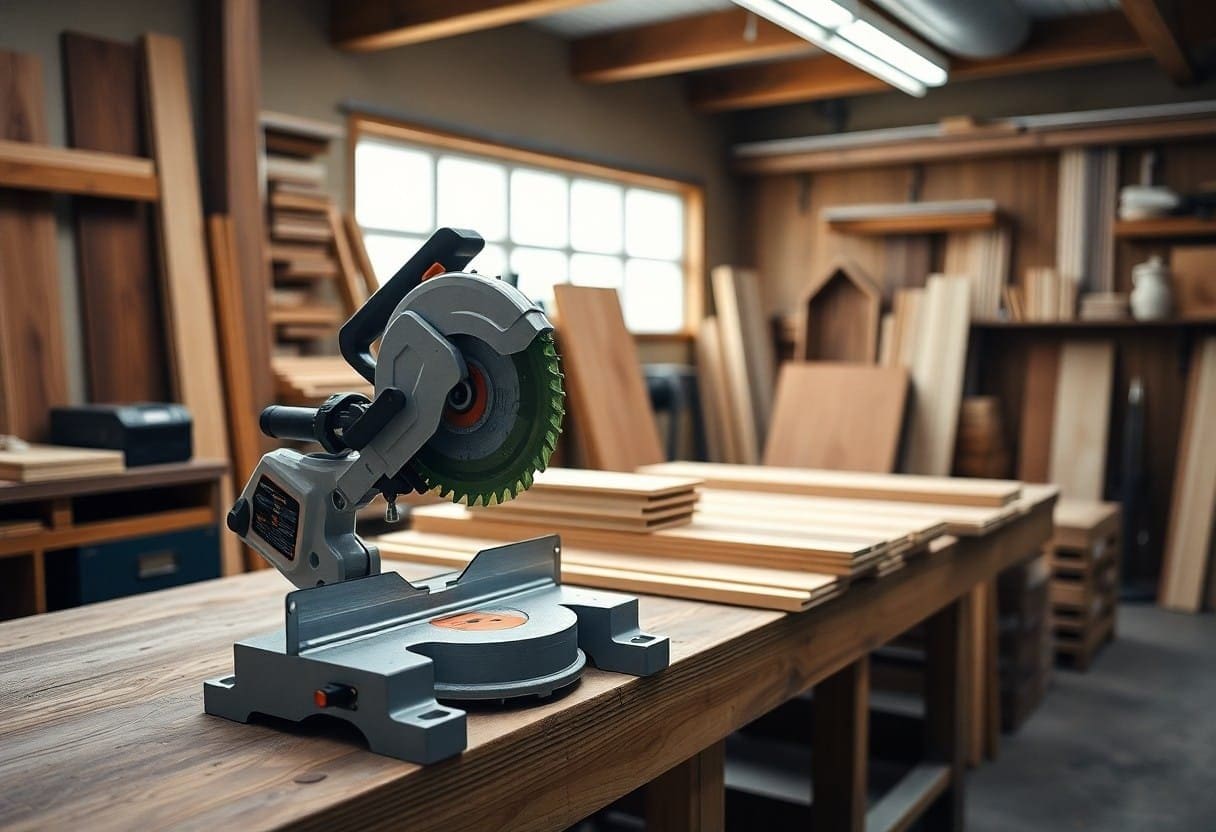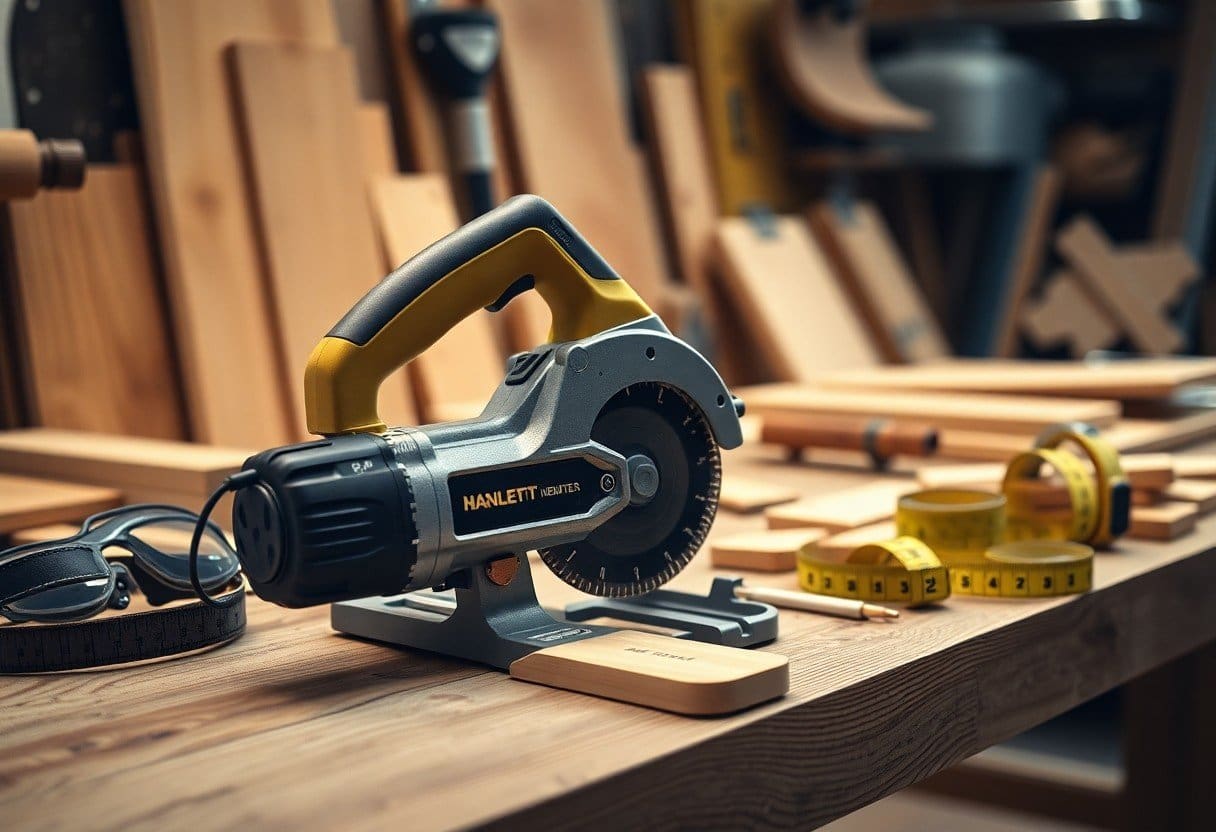There’s no better feeling than crafting something with your own two hands, and a crucial tool that can elevate your woodworking game is the dovetail saw. Whether you’re a seasoned woodworker or just starting out, adding this precision tool to your DIY arsenal will have you creating seamless joints and beautiful pieces in no time. Let’s examine why a dovetail saw could be the game-changer you’ve been looking for in your next project.
What is a Dovetail Saw?
While you may think a saw is just a saw, a dovetail saw is a specialized hand saw designed for making precise cuts, especially for woodworking projects like dovetail joints. Its thin blade and fine teeth make it perfect for creating tight-fitting, interlocking joints. If you’re working on a project that requires intricate joinery work, a dovetail saw is a must-have tool in your workshop.
History: Definition and History
History has it that the dovetail saw originated in the late 18th century during the rise of craftsmanship in furniture making. The design was perfected for creating dovetail joints, known for their strength and aesthetic appeal. Initially crafted by skilled metalworkers, dovetail saws have evolved over time with modern advancements in materials and manufacturing techniques.
Types of Dovetail Saws
With various types of dovetail saws available in the market, you can choose one that best suits your woodworking needs. Understanding the differences between each type can help you make an informed decision on which dovetail saw to invest in for your projects.
| Types of Dovetail Saws | Description |
|---|---|
| Crosscut Dovetail Saw | Primarily used for cutting across the grain of the wood, providing clean and precise cuts for dovetail joints. |
| Rip-Cut Dovetail Saw | Designed for cutting with the grain of the wood, ideal for creating strong and accurate dovetail joints. |
| Japanese Dovetail Saw | Features a pull-stroke design for smooth and efficient cutting, commonly used by woodworking enthusiasts for its precision. |
| Folding Dovetail Saw | Compact and portable, perfect for on-the-go woodworking projects or for those with limited workspace. |
| Hybrid Dovetail Saw | Combines features of both crosscut and rip-cut saws for versatility in woodworking applications. |
This breakdown can give you a better idea of which type of dovetail saw aligns with your project requirements. Selecting the right tool can significantly impact the efficiency and accuracy of your cuts, ensuring that your dovetail joints fit snugly together.
Benefits of Using a Dovetail Saw
Precision and Accuracy
Using a dovetail saw for your woodworking projects can significantly enhance the precision and accuracy of your cuts. The fine teeth of a dovetail saw make it ideal for creating clean and sharp joinery, such as dovetail joints. With a dovetail saw in your toolbox, you can achieve tight-fitting joints that not only look professional but also improve the overall strength and durability of your furniture or projects.
Versatility in Woodworking
Dovetail saws are highly versatile tools that can be used for a variety of woodworking tasks beyond just dovetail joints. You can use a dovetail saw for cutting tenons, trimming parts, or even delicate trim work. Its compact size and precision make it a valuable addition to any woodworker’s collection, allowing you to tackle intricate details with ease.
With its fine teeth and control, a dovetail saw lets you make precise and intricate cuts, making it a go-to tool for crafting detailed woodworking pieces.
Ease of Use for Beginners
Accuracy in woodworking is necessary, especially for beginners starting with their projects. A dovetail saw offers ease of use, allowing you to control your cuts with precision and confidence. Its manageable size and sharp teeth make it a user-friendly tool for those new to woodworking. The saw guides your hand to follow the intended line, making it easier for beginners to achieve professional-looking results.
With a dovetail saw, you can practice your hand coordination and cutting skills, gradually improving your woodworking techniques and craftsmanship as you gain more experience.
Choosing the Right Dovetail Saw for Your Project
Considerations for Material and Thickness
To choose the right dovetail saw for your project, consider the material and thickness of the wood you will be working with. For softer woods, a finer toothed saw would work well, providing a more precise cut. If you are working with hardwoods or thicker stock, a saw with coarser teeth might be more efficient in making the cuts.
Hand Saw vs. Power Saw Options
For some projects, a hand dovetail saw might be all you need, giving you the control and precision required for intricate cuts. However, if you have a larger project or need to make repetitive cuts, a power dovetail saw could save you time and effort. Consider the scale and complexity of your project when choosing between a hand saw and a power saw.
For the hand saw option, there is a certain satisfaction in the traditional method of cutting dovetails by hand, allowing you to connect with the wood and the craft on a deeper level. On the other hand, a power saw can be a practical choice for efficiency and when time is of the essence.
Budget-Friendly Options for DIY Enthusiasts
Another factor to consider when selecting a dovetail saw is your budget. There are affordable hand saw options available that provide good quality and functionality without breaking the bank. Look for reputable brands that offer value for money without compromising on performance.
With budget-friendly power saw options, you can still find reliable tools that won’t empty your wallet. Consider renting a power saw if you only have a few projects that require its use, or invest in a mid-range option that balances cost and quality for long-term use.
Dovetail saws come in a range of styles and price points, so take the time to evaluate your needs, project requirements, and budget to find the right fit for your DIY endeavors. Whether you opt for a hand saw or a power saw, the key is to choose a tool that feels comfortable in your hand and helps you achieve the precise cuts needed for your woodworking projects.
Preparing Your Workpiece for Dovetail Sawing
Measuring and Marking Techniques
The first step in preparing your workpiece for dovetail sawing is accurately measuring and marking the wood. The key to successful dovetail joints is precision, so take your time with this step. Use a combination square and a sharp pencil to mark the layout lines on your workpiece. Bear in mind, measure twice, cut once!
Clamping and Holding Methods
With respect to clamping and holding your workpiece in place for sawing, there are a few different methods you can use. One popular technique is to use a woodworking vise to secure the piece firmly. Alternatively, you can also use clamps to hold the workpiece to a stable surface, ensuring it doesn’t move while you saw.
Remember that a stable work surface is crucial for accurate and safe sawing. If your workpiece moves while you are sawing, it can not only result in a botched joint but also pose a safety hazard. Make sure your workpiece is securely held in place before you start sawing.
Safety Precautions for Sawing
To ensure your safety while using a dovetail saw, there are a few precautions you should take. First and foremost, always wear safety goggles to protect your eyes from any wood chips or debris that may fly up during sawing. Additionally, consider using a push stick to guide the workpiece through the cut, keeping your hands at a safe distance from the blade.
It’s also a good idea to keep your fingers away from the blade’s path and to maintain a stable stance while sawing. Bear in mind, safety first when working with any sharp tools!
Understanding More About Safety Precautions for Sawing
With respect to sawing, especially with a precision tool like a dovetail saw, it’s important to prioritize safety. Taking the time to understand the potential risks and how to mitigate them will not only result in a better final product but also ensure that you can continue woodworking safely for years to come.
Mastering the Art of Dovetail Sawing
Despite the availability of power tools, there is a certain satisfaction that comes from using traditional hand tools like a dovetail saw. Mastering the art of dovetail sawing requires practice, patience, and a good understanding of the techniques involved.
Basic Cutting Techniques and Strokes
For basic cutting techniques and strokes with a dovetail saw, it’s imperative to start with the right grip and posture. Hold the saw firmly but not too tightly, letting the weight of the saw do the work. Utilize long, smooth strokes, keeping the saw at a slight angle to create precise cuts. Practice maintaining a consistent rhythm to ensure an even finish.
Tips for Smooth and Even Cuts
Any woodworker knows that achieving smooth and even cuts with a dovetail saw requires attention to detail. Make sure the teeth of the saw are sharp for effortless cutting. Begin by making light initial cuts to establish the groove before proceeding with deeper strokes. Remember to let the saw do the work, avoiding putting excessive pressure that can lead to wandering cuts. Knowing when to stop and reassess your progress will help you maintain control and precision throughout the cut.
- Ensure your saw is properly sharpened and set.
- Practice proper body mechanics to maintain a steady hand.
Common Mistakes to Avoid
Smooth, accurate dovetail sawing is attainable, but it’s crucial to be aware of common mistakes that can hinder your progress. One of the most frequent errors is applying too much pressure while cutting, which can result in jagged edges and imprecise joints. Cutting too quickly or hastily can also lead to inaccuracies in your work.
Knowing how to anticipate these mistakes can help you avoid them and improve your sawing technique.
Advanced Dovetail Sawing Techniques
Not all dovetail sawing techniques are created equal. To take your DIY projects to the next level, consider incorporating these advanced techniques into your woodworking arsenal:
- Creating Decorative Joints and Designs
Creating Decorative Joints and Designs
One way to elevate your woodworking projects is by utilizing your dovetail saw to create intricate and decorative joints and designs. Whether you’re aiming for a classic dovetail joint or looking to add a touch of flair with more complex patterns, the precision of a dovetail saw can help you achieve professional-looking results.
| Technique | Description |
| Geometric Patterns | Experiment with different angles and depths to create visually appealing patterns in your woodwork. |
| Inlays and Overlays | Use your dovetail saw to cut precise grooves for inlays or overlays, adding intricate details to your project. |
Cutting Curves and Irregular Shapes
Designs that incorporate curves and irregular shapes can add a unique touch to your woodworking projects. With the right technique, your dovetail saw can handle these challenging cuts with ease, allowing you to unleash your creativity and tackle more complex designs.
Understanding how to maneuver your dovetail saw along curved lines or irregular edges is key to achieving smooth and precise cuts. By practicing these techniques and experimenting with different cutting angles, you can broaden your woodworking skills and take on projects that demand a higher level of craftsmanship.
Using Dovetail Saws for Restoration Projects
For restoration projects where precision and attention to detail are crucial, a dovetail saw can be your go-to tool. Whether you’re repairing vintage furniture or restoring architectural elements, the fine teeth and precise cutting ability of a dovetail saw make it ideal for delicate and intricate work.
Plus, the compact size and maneuverability of a dovetail saw allow you to access tight spaces and make intricate cuts with ease, making it a versatile tool for a wide range of restoration projects. Trust the precision of a dovetail saw to help you bring new life to old, worn-out pieces with the care and craftsmanship they deserve.
Summing up
Now you have learned about the beauty and efficiency of using a dovetail saw for your DIY projects. With its precision and versatility, this tool can elevate your woodworking skills and help you achieve professional results. So why not give it a try and see the difference it can make in your latest project?




